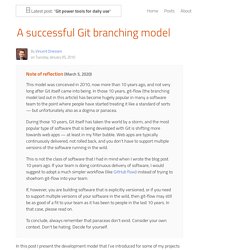

Round 5 results - TechEmpower Framework Benchmarks. In the following tests, we have measured the performance of several web application platforms, full-stack frameworks, and micro-frameworks (collectively, "frameworks").

For more information, read the introduction, motivation, and latest environment details. Round 5 Windows in the house. This round's developer community contributions include Spray, Web::Simple, RestExpress, Revel, CPPSP, and the long-awaited .NET tests on Windows. Windows is included as a third chart type below. Updated 2013-05-29: Now includes Revel on i7, Mono tests, and Kohana. Show filters panel Showing all 90 frameworks. Filters Classification We classify frameworks as follows:Full-stack, meaning a framework that provides wide feature coverage including server-side templates, database connectivity, form processing, and so on.Micro, meaning a framework that provides request routing and some simple plumbing.Platform, meaning a raw server (not actually a framework at all).
Disable all Language Platform Front-end server Framework. Here’s How Spotify Scales Up And Stays Agile: It Runs ‘Squads’ Like Lean Startups. What’s the secret to staying fresh, lean and mean when you’re a hot tech company on a fast growth trajectory?

A fascinating document brought to our attention today today by Andrew Mager, hacker advocate at Spotify, answers that question in some detail by telling us how the music streaming juggernaut does it: by dividing up its business into small clusters — which it calls ‘squads’ — and running each like a startup in its own right. We’ve embedded the document below. The information here is all the more relevant since this week we saw that Spotify is now finally making a move on to the web. When that is fully live, it could open Spotify up to another big growth boom from a whole new population of users beyond the 15 million early adopters (4 million of which pay) who currently use its mobile and desktop clients. It’s also a nice complement to another insight into startup scaling we came across some months ago, from Mike Krieger, co-founder of Instagram.
Image: Flickr. (1) Scaling Apache Giraph to a trillion edges. Phabricator. Trello for Agile Development at BlockAvenue - Dan Adams. One of the my roles as CTO at BlockAvenue is to manage a high velocity, agile development process.

Trello is my new favorite tool when it comes to ticket management but it’s not without limitations. Here’s how we use Trello at BlockAvenue and some of the challenges working with it. The Basics Cards are arranged into buckets (Trello lists) each bucket representing how far in the future it’s cards will get done. The further out the bucket, the larger and less well-groomed it may be. Lists are arranged left-to-right so that the most frequently used lists are on the first screen for most displays, the less used lists being to the right on the second screen.
Dec 2012: All of the priority cards for this month based on business priorities and other factors. In addition to the time frame-based lists, there are a few special ones: Inbox: All new cards go here. Anatomy of a Good Card Well-formed cards encourage getting the work done smoothly and accurately. A successful Git branching model » nvie.com. Note of reflection (March 5, 2020)This model was conceived in 2010, now more than 10 years ago, and not very long after Git itself came into being.

In those 10 years, git-flow (the branching model laid out in this article) has become hugely popular in many a software team to the point where people have started treating it like a standard of sorts — but unfortunately also as a dogma or panacea.During those 10 years, Git itself has taken the world by a storm, and the most popular type of software that is being developed with Git is shifting more towards web apps — at least in my filter bubble. Web apps are typically continuously delivered, not rolled back, and you don't have to support multiple versions of the software running in the wild.This is not the class of software that I had in mind when I wrote the blog post 10 years ago. Why git? ¶ For a thorough discussion on the pros and cons of Git compared to centralized source code control systems, see the web. The main branches ¶ develop.